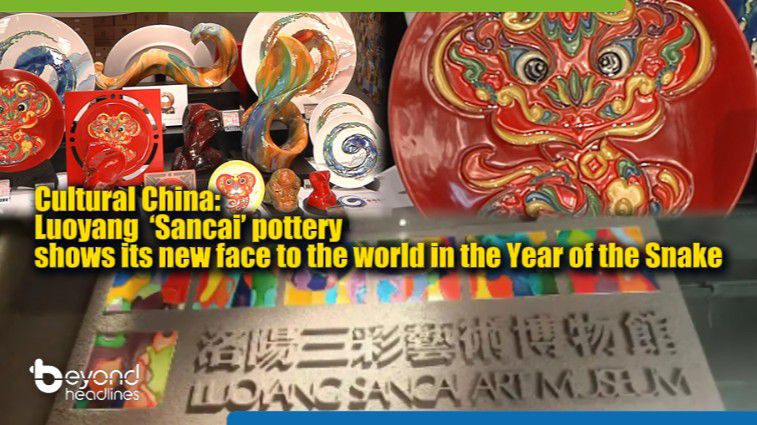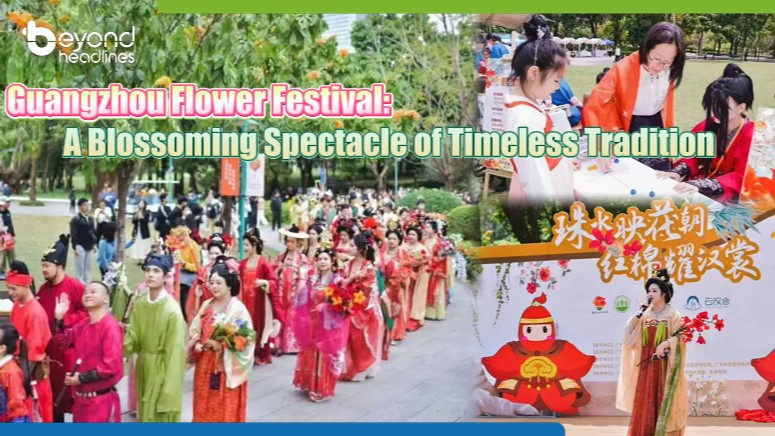This picturesque place truly has a great ambience. It feels like a fairy tale world. This is not a gaudy rendition of a European town, but a genuine cultural district in Xinjiang with nearly a hundred years of history. This is Liuxing Street in Yining City of Ili Prefecture in western China’s Xinjiang.
B: We are now at the central square of Liuxing Street. As you can see, there are six different streets surrounding us and splitting off in all directions. There are thirteen ethnic groups living on Liuxing Street and each house has its own characteristics.
This is an accordion band composed of members from thirteen ethnic groups. They have been forging close ties and great friendships because of their shared love of music.
I’m Xibe.
I’m Tatar.
I’m Russian.
I’m Manchu.
I’m Han.
I’m Tajik.
I’m Kazak.
I’m Uyghur.
We are a family.
They come from different ethnic groups, bonded by the accordion, and gathered together by the will of one person, forming the “Liuxing Street Accordion Band”.
The band was initially composed of members from eight ethnic groups, and now it has expanded to thirteen ethnic groups. It’s like a microcosm of the harmonious coexistence of multiple ethnic groups in Xinjiang. The key man who contributes behind the scene is Alexsander, the real owner of these accordions displayed in this little museum.
Alexsander Zazolin / Inheritor of accordion intangible cultural heritage
A: My father was an accordion player and repairman. When I was young, I loved listening to him playing the accordion. I would help him when he was fixing the accordions and I learned the skills from him. I started learning to actually play the accordion when I was 12. After I learned it, my father would ask to play it in front of his friends. He told his friends, “My son plays the accordion better than me. Son, come and play it.” It remains a very happy memory. Later on, that accordion needed to be sold because of some financial difficulties facing my family. After that, I remember being very unhappy. We had no money, and no music. Let me play “My Motherland and I” for you (performance)
My grandparents came here in 1931 from the then Soviet Union. My parents were born here. My parents told me my hometown is China. It was because my grandfather used to tell us that we belonged to the place where we were born. I share the same views and always tell people that my country is China.
Alexsander, the “third generation of Russian descendants in Xinjiang”, dedicated his life savings and efforts to collect thousands of accordions from over 20 countries. He always had a wish, which was to have a place where he could share the story of each accordion to more people. This wish was finally realized in 2018 with the establishment of the Alexander Accordion Collection Hall, Liuxing Street Folk Culture Exhibition Hall. The local government invested RMB 3.67 million to bring this vision to life.
When Alexsander talks about how he overcame all the difficulties to buy his first accordion at the age of 15, it’s as if it happened just yesterday.
A: Back then, we did fishing in the Ili River. I earned only a little bit of money — maybe 5 to 10 RMB at a time, and saved it up like that.
A: This accordion, I bought it for 350 RMB in 1972. The story is written here. I saved up 300 RMB. Then I borrowed 50 RMB. At that time, this amount of money could buy a courtyard.
Donald Orsbay / Accordionist
23-year-old Donald is the youngest member of the accordion band. He studied vocal performance at the university. But he told us that he learned to play the accordion through self-study and by learning from others. We Kazak people are known for our musical talent.
My father also loves playing the accordion.
I watched him play the accordion when I was young.
And I love the accordion very much.
While I was learning music in university, I taught myself how to play the accordion.
Alexsander doesn't have much free time and seldomly comes to the museum. He repairs accordions at his own workshop. However, I often go to him to check and repair my accordion as well as to learn some techniques from him.
Donald: My friends also go to Alexsander when they need to fix their accordions. He’s very helpful. If there's anything you don't know, you can ask him. He can answer your questions about fixing or playing the accordion.
Donald asks Alexsander for advice on playing the accordion every week, and Alexsander is happy to share his knowledge. Their relationship is akin to that of a master and apprentice. When they communicate, they effortlessly switch between languages. When asked, it turns out that they were speaking Kazak.
Host: How many languages do you know?
A: Five. Xibe, Mandarin, Russian, Uyghur, and Kazak.
D: I know Uyghur, Kazak, Mandarin, and Mongolian.
Liuxing street was planned and built in the 1930s. It has become a thriving community where thirteen different ethnic groups live together harmoniously. There are currently more than 3,500 residents in 1,420 households.
They live together, speak each other’s languages and learn each other’s music and dances. To them, ethnic harmony is not an abstract concept but a daily reality.
B: Alexsander took us to his home to show us his collection. Let’s explore together.
V: This is a very special basement.
B: He said there are 500 accordions here.
V: And a wide variety of audio equipment. The coins. This gramophone is amazing.
Alexsander has a strong passion for collecting, repairing, playing, and passing on accordions. In 2013, he was accredited by the Xinjiang Uyghur Autonomous Region Cultural Department as a representative inheritor of regional level of intangible cultural heritage project “Russian Banyang Art”.
Just then, someone comes to find Alexsander to repair an accordion. It turns out that the keys of the instrument have problems, and Alexsander is able to fix it in less than half an hour.
A: It’s fixed. Here come 300 RMB.
The accordion is an indispensable part of Alexsander’s life. He has created nearly 30 accordion pieces, expressing his love for his birthplace and China.
This accordion next to the workbench is Alexsander’s favorite. At the age of 65, his eyesight and physical strength are not as good as before. But he hopes that his craftsmanship and passion for accordion can be passed on.
This accordion is also handmade.
In 1947.
I will play you a song I composed myself.
“Liuxing Street March” .
Liuxing Street is where I grow up.
Liuxing Street is my hometown.
A: I have a new apprentice now. My son-in-law. He loves the accordion. He knows how to play it now. I said, you have to learn to play it, then you will know how to repair it or know whether the sound is right. He can play it now and has started to learn to repair it.
Alexsander's son-in-law is named Jiang Hao, who is of Han ethnicity. It was a stroke of fate that brought him and his wife together at first sight. After just two months of getting to know each other, they decided to enter into a cross-ethnic marriage.
Jiang Hao’s journey with the accordion has just begun, but many more beautiful stories among different ethnic groups will continue.
Burmie:
I was enjoying my time here with the background of live accordion music, and Russian architecture in front of me. It’s a unique experience to see the blending of diverse ethnic cultures here.
Venus:
If we really want to learn about each other's cultures, it’s not enough to just read them from textbooks. To me, it's about immersing in the atmosphere and living in the moment. The collision of different styles of dance and music actually sparks creativity. This is a proof of mutual respect and inclusivity everywhere.












